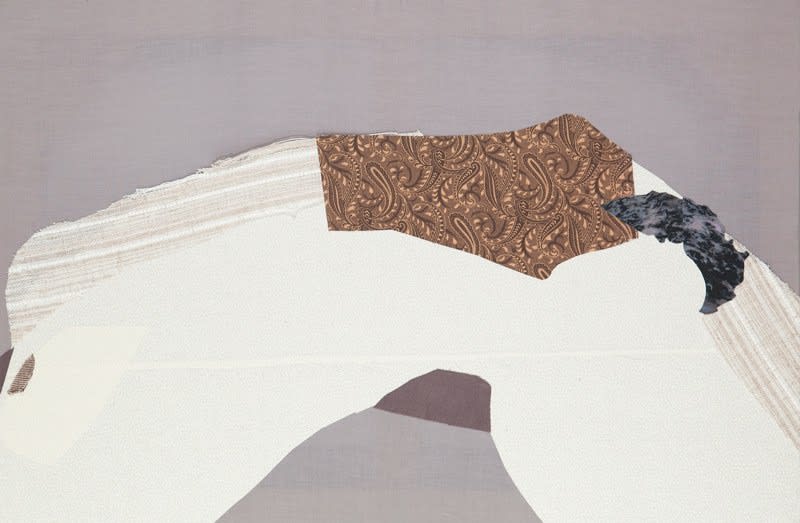Of Cooper’s work Edgar Bryan, Artist, writes:
Cooper’s painting style somehow combines a little folk art and a little photorealism. There is a dichotomy of beauty and banality that seem to be her specialty, and her recent collages ratchet up the tension to sheer dissonance. Pictures of erotic female figures cropped mostly around the torsos, and collaged entirely from drab textiles of a quality which look as though they were cut from the curtains of any one of a thousand or so different abandoned motels across the Midwest. The figure and the fabric combine or rather collide to make some kind of folk-American violence.
Alika Cooper was Born in 1979 in Guam and lives and works in Los Angeles. She received her MFA from CCA in San Francisco in 2006.
Eleanor Harwood Gallery is pleased to present our first solo show with Los Angeles based artist Alika Cooper. Cooper has been exhibiting widely in the U.S. and Europe. She has had solo projects at Kim Light Gallery LA, Hamish Morrison Galerie, Berlin and Galleria Studio Legale, Rome. Cooper was accepted into the Viewing program at the Drawing Center, NYC, this year. Upcoming projects include a group exhibition at Mark Moore Gallery this September, a painting survey exhibition at Torrance Art Museum in January, and a group exhibition at ACME Gallery in May.
Cherried marks a substantial departure for Alika’s work. The pieces in the show are realized through fabric and adhesive, collaged onto stretched fabric on strecher bars. Though the forms and ideas of the work remain generally in keeping with her previous work painted in gouache on paper and oil on canvas, their realization in a new medium adds an extra level of meaning to the work. This departure marks an interesting coalescence. The fabric used symbolizes a feminine trope and that is in turn used to depict the female form. Cooper’s choices of small printed patterns of tiny flowers shrewdly create a quiet tone in the image while frequently depicting an almost violent scene. The quiet of the domestic florals are at odds with the dramatically sexualized figures. This lingering uncertainty and balance of gentleness and attack continues throughout the body of work.

